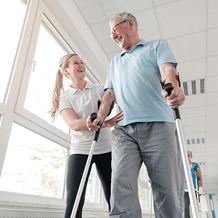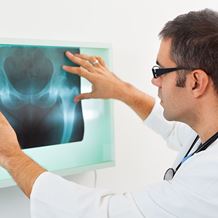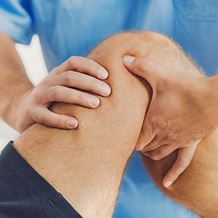
- Home
- Services
- Orthopaedics
- Our Hospitals
- Orthopaedics at St Vincent’s Private Hospital Sydney
Orthopaedics at St Vincent’s Private Hospital Sydney
As one of Australia’s leading private hospitals, we offer the latest orthopaedic expertise, technologies and treatments. We are committed to supporting you through your hip or knee replacement surgery journey. We are with you every step of the way.
1300 152 270

Our orthopaedic care team
At St Vincent’s Private Hospital Sydney, we have a highly skilled and dedicated Orthopaedic Care Team, including leading orthopaedic surgeons, specialised nurses, physiotherapists and occupational therapists who work closely with you to understand your needs and goals.
Our Orthopaedic Surgeons have a wide range of skills across multiple sub-specialities, including hip, knee, shoulder, elbow, foot and ankle. Our specialists are well represented in the Australian Orthopaedic Association and have extensive experience in the latest surgical techniques including robotic assisted surgery, and computer assisted surgery. We perform over 1,000 joint replacements every year, as well as reconstructions, grafting and arthroscopies. This expertise also extends to more complex surgical requirements such as joint replacement revision surgery, medial uni-compartmental arthroplasty and computer-generated implants that are specifically tailored to your individual needs.
With our recent major redevelopment and refurbishment, we are proud to offer our services in brand new, state of the art facilities. St Vincent’s Private Hospital Sydney now boasts additional patient accommodation, new operating theatres and both inpatient and day rehabilitation services including fully equipped gym and hydrotherapy pool.


Your joint replacement surgery
Everyone’s journey will look different. Our team work with you to understand your clinical needs, lifestyle and your private health insurance cover. At St Vincent’s Private Hospital Sydney, your satisfaction, care and recovery are our highest priority.
Our meticulous surgical techniques and infection prevention programs ensure we keep you safe. We proudly have one of the lowest joint infection rates in the country each year, compared to the accepted 1% worldwide average.
Our multi-disciplinary Orthopaedic Care Team are dedicated to supporting you right from the beginning of your journey, through to discharge and recovery.
Robotics and orthopaedic surgery
Robotic-assisted surgery enables our specialists to perform various complex procedures with elevated levels of precision, control and safety. Robotic-assisted technology is already an established offering of St Vincent’s Private Hospital Sydney’s leading orthopaedic service, with the DePuy Synthes VELYS Robotic Assisted Solution (VELYS RAS) and Mako Robotic-Arm Assisted Technology (Mako Robot), offering innovative treatment choices for both doctors and patients.
Both systems support surgeons to plan for and execute precise knee replacements, personalised to a patient’s specific anatomy. You can read more about the VELYS RAS and Mako Robot in our knowledge hub.
Your specialist will decide if robotic surgery is the right treatment option for you.
Your Surgery Journey
 Booking surgery
Booking surgery
Access our online portal to complete your admission to hospital. It is a quick and easy way to begin your admission process. For any questions about your upcoming admission, contact our team (02) 8382 7111.
 Preadmission Appointment
Preadmission Appointment
Our team will carefully assess your needs and create a personalised recovery pathway for you. You will receive further information about your hospital stay and have any of your questions answered.
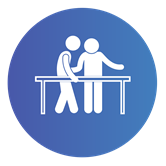 Prehab Consult
Prehab Consult
We will introduce you to comfortable exercises and suitable walking aids to make sure you are set up for a speedy recovery.
 Joint School
Joint School
Join us online for a live and interactive education session and learn more about what you can expect during your hip or knee replacement surgery. Joint School is held twice weekly and can be attended before or after your preadmission appointment. Register your interest in Joint School.
 Your Surgery
Your Surgery
Our dedicated team will be ready to support you when you arrive for surgery. For more information about the day of surgery, click here.
 Your Recovery
Your Recovery
Our Orthopaedic Care Team support you in your recovery journey beyond surgery. We want you to return home and back to normal activities as soon as possible.
Your recovery options
Together with your specialist, our team will carefully assess your needs and create a personalised recovery pathway for you. There are different options for your recovery after surgery. With the support of our dedicated team, we will work through your recovery options to ensure you experience better outcomes, including faster return to daily activities and a higher rate of satisfaction after surgery.

Day programs
Day therapy programs are also available for eligible patients.
Your surgeon and physiotherapist will work with you to determine if you are suitable.
Our day therapy program may include visits to our rehabilitation facility for physiotherapy sessions in the gym or hydrotherapy pool, group dietician or occupational therapy sessions.
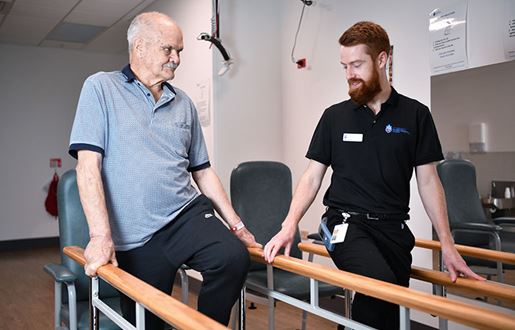
Hydrotherapy
Hydrotherapy Programs are also available for eligible patients. Your surgeon and physiotherapist will work with you to determine if you are suitable for these programs.
These programs include visits to our rehabilitation facility where you will work with a physiotherapist through a series of progressive exercises in the water.

Inpatient rehab
Admission to inpatient rehabilitation is available for patients who have a clinical need and do not meet the criteria for a safe discharge home.
Your Orthopaedic Care Team will work with you to make sure the safest recovery option is decided.
Find an orthopaedic specialist
Find a specialist
Frequently Asked Questions
Our Orthopaedic Care Team will work closely with your surgeon to work through your recovery options with you, based on your clinic needs, lifestyle and your private health insurance cover. In preparation for surgery, you will be assessed by our team in a preadmission appointment, shown comfortable exercises in your prehab consultation and prepared for surgery in our Online Joint School.
Everyone’s recovery journey will look different. These days most patients are choosing to return home to complete their recovery. This means that you can choose to have our experienced Orthopaedic Care Team, including specialised orthopaedic nurses, physiotherapists and occupational therapists, visit you in the comfort of your own home. You will also have access to our gym and hydrotherapy pool at our rehabilitation facility.
Day Therapy Programs are also available for suitable patients and involve group gym and hydrotherapy sessions at our rehabilitation facility.
In the unlikely event there is a reason that you are unable to go home as planned, your surgeon and our Orthopaedic Care Team will arrange for you to stay in our Inpatient Rehabilitation facility.
Our recovery pathway options are tailored to you. Through our comprehensive recovery pathway, our team will assess and monitor you every step of the way to ensure we meet your needs and goals for hip or knee replacement surgery.
Yes, you can. The dressing over your wound is waterproof; however, if for any reason water gets soaked through the dressing, it may need to be changed. You will need to keep your wound clean and dry for two weeks after your operation. You can contact the Orthopaedic Care Team if you require any additional dressings.
Everyone’s pain varies after hip or knee replacement surgery with the amount of time before the pain goes away different for each individual. As a general guideline, your pain can be significantly less by approximately six weeks following your hip or knee replacement surgery. You may experience some ongoing intermittent pain symptoms at night or after increased activity, for example a longer walk than normal or a session with your physiotherapist for progression of your recovery plan.
You will gradually reduce the amount of pain relief that you require as your pain settles and as you regain your independence. You may still require some pain relief either overnight or when exercising, but you should aim to gradually wean off the prescribed pain relief, following discussions with you general practitioner and, if required, your surgeon.
Your general practitioner or your Surgeon will review your pain management plan throughout your recovery and provide you with advice about the best approach to reduce and then cease the prescribed pain relief. It is not uncommon to have some intermittent pain or discomfort symptoms in your hip or knee and leg muscles for up to six to nine months after surgery. These intermittent pain symptoms can be managed with over-the-counter pain relief. Check with you general practitioner regarding the safety of taking these medications.
This will depend on your surgeon’s preferences. Your surgeon will tell you if it will be safe to sleep on your side. Once you surgeon lets you know when it is safe to sleep on your side, you will start by sleeping on the side of your non-operated hip or knee. Patients often find it more comfortable to place a pillow between their legs when returning to sleeping on their side.
The most important aspect of your walking recovery is that you walk safely without a limp. You may have developed a limp while protecting your hip or knee prior to your operation, which may continue out of habit. Therefore, unless specified by your surgeon, you are allowed to stop using one crutch or a walking stick when you can walk without a limp and you feel steady and safe.
Your physiotherapist will advise you when you are ready to begin walking without a single crutch or walking stick. Remember, people are more careful when they see someone with a crutch or walking stick, so continue using these when you are in crowds, on uneven ground or travelling on public transport until you are confident and strong.
It normally can take up to approximately three months for the swelling to gradually go away. You can continue to apply ice packs to the hip or knee area and continue to rest throughout the day, especially after exercise or a walk, for the first six weeks after hip replacement surgery.
It is important to carefully follow the instructions from your orthopaedic surgeon and the members of our Orthopaedic Care Team. You will need to notify your surgeon if you develop any of the following warning signs.
Warning signs of possible blood clots in the legs include:
- Pain in your calf and leg that is not related to your incision
- Tenderness or redness in the calf
- New or increasing swelling in your thigh, calf, ankle or foot
Warning signs of a clot in your lungs (pulmonary embolism) include:
- Sudden unexplained shortness of breath
- Sudden onset of chest pain
- Localised chest pain with coughing
Work that requires a great deal of moving around or long periods of being on your feet should not be attempted for six to eight weeks after hip or knee replacement surgery following clearance from your surgeon. Returning to half days at work initially can be helpful to assist with returning to work.
It is not advisable to do any regular jogging, running or jumping activities after your hip or knee replacement surgery, particularly for the first three months following surgery. You will need to check with your surgeon regarding returning to impact sports because they may affect your hip or knee replacement in the long term.
Keep your TED stockings to wear when you fly. Our Orthopaedic Care Team can arrange telehealth consultations before and after hip or knee replacement surgery for patients who are discharged home and need to travel long distances.


